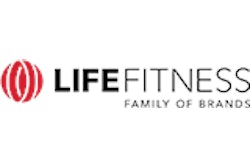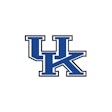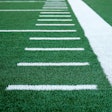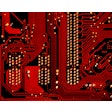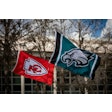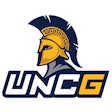We're living in the era of the "quantified self," the idea that everything we do can be tracked using technology, recorded, integrated, analyzed and applied to our daily lives.
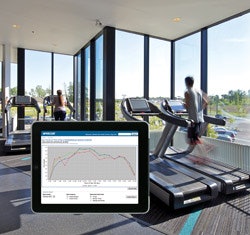 (Main Photo by Lisa Logan Photography/inset image courtesy of Precor)
(Main Photo by Lisa Logan Photography/inset image courtesy of Precor)We're living in the era of the "quantified self," the idea that everything we do can be tracked using technology, recorded, integrated, analyzed and applied to our daily lives. Health and fitness is one area where such technology shines - from basic pedometers and heart rate monitors to tools like Fitbit, BodyMedia, BodyBugg and a host of websites and apps that allow users not only to track how far they've gone and how many calories they've consumed and burned, but exercise intensity, personal moods, and even the quantity and quality of sleep. Data is stored on the cloud and can be accessed any time, by any means, anywhere an Internet connection is available.
And they expect their exercise equipment to keep up with them. "A member needs to be able to connect in today's society," says Bryan Arp, cofounder and CEO of San Francisco-based Netpulse, which supplies console software to fitness equipment manufacturers that account for more than 75 percent of global fitness equipment sales to health clubs. "People travel. If someone works out in New York, there's a chance he or she will work out in San Francisco the next day. They can go up to any of those brands, enter their ID, and log onto the network. Their entertainment preferences can be loaded for them - TV, music, videos, favorites, workout history."
Having instant access to this information isn't just a benefit for exercisers, though. "All of those units that are connected and capturing data for the member are also capturing data for the club," says Arp. "They can see how many workouts occur on each piece of equipment, how often the equipment is used, whether people are using bikes more than treadmills or ellipticals. This capture of data is asset management at its most basic level."
Remote asset management has been around as a concept for some time, but it has only been embraced in the fitness industry during the past two years. Woodinville, Wash.-based Precor unveiled its cloud-based Preva Asset Management System in the spring of 2011, followed this past spring by PrevaNet, an application that connects exercisers to the web during their workout. Technogym, headquartered in Cesena, Italy, debuted its mywellness cloud this past spring, a collection of applications not just for asset management but also to interact with and improve the customer experience. Says Precor vice president of networked fitness Brent Brooks, "A lot of these different types of ideas have been around for a while, but we're excited because the technology we can deliver has finally caught up to the point where the types of experiences we can deliver are really interesting."
"For so long, everyone has said data is important, but I think 2013 will be the year when clubs start to really integrate it into their business," adds Arp. "I think before it was just sort of a fringe benefit. Some clubs did it. Some talked about it, but didn't implement it or understand it. The data was incomplete. If you only have data on some of your equipment, it's hard to make any judgment."
The advancements in technology over the past few years have allowed programmers to design tools that facility owners can use to fill in the gaps in their data, not to mention make that data more easily accessible. Take, for instance, tracking equipment usage. "One of the challenges as an operator is knowing when and how to rotate equipment to spread usage out across the line of equipment," says Brooks. "Location has a lot to do with how members use equipment. A lot of people have a favorite treadmill - it's by the door or under a fan. We can generate a report that tells operators the average usage across the treadmills so that over time they can plan for better rotation."
Prior to the introduction of a centralized data storage platform, such data could be harvested, but it was much more difficult. Says Brooks, "An operator would have to have staff members go to each console. You'd be given a special code that would allow you to look at the behind-the-scenes statistics. You could see how many hours and miles had been logged, and you'd have to do that with each individual piece of equipment, write it down, and look at it. Because it was more complex, a lot of operators didn't do it. Natural human behavior suggests that the easier a task is, the more likely it is to get done. Now, with a click of a button, you can pull all that data at once, export that information and create an Excel file to sort it and create a plan."
Data collection can also be useful when selecting the right mix of equipment for the cardio room. "We have a snapshot of when and how often a piece of equipment is used during the course of a day," says Matrix Fitness product manager Andrew Kolman of the company's Asset Management System, which was introduced in 2009. "If we have a client come in and say they have to have 25 steppers because that's what they've always had, we can say, 'Yeah, you have 25 steppers, but you've got treadmills, trainers, climbers and bikes, and if you look across the average usage over 24 hours, your steppers don't get used a lot but your treadmills do. The next time you buy, you may want to think about mixing up your product floor to cater to your customers.' It's no longer subjective."
Not only can management software be used to track how often equipment is used, but also when it's not being used, and, potentially, why. All of the equipment in a facility is interacting with a main server, either via cable or wirelessly. "If you have 50 pieces of cardio on the floor, each unit reports in, telling an operator whether it's in use, operating fine but sitting idle, or if it hasn't been used for a certain period of time," says Brooks. "In our system, a unit sends in a heartbeat every 15 minutes, just checking in and letting the system know that it's okay. If you miss two consecutive heartbeats, that unit reports in as silent. It could be that somebody disconnected a cable or there's a software issue, but it tells the owner that for whatever reason that piece isn't connecting."
Additionally, the system can offer alerts when routine maintenance is required. Explains Kolman, "If the facility has a bunch of products, if one gets to a certain distance milestone, the software will generate an alert that you're reaching 5,000 miles, for instance, and it's time to tighten the belt, vacuum the motor compartment, tighten the bolts, things like that."
All of the capabilities enabled and improved by remote management come at a price. "As an operator, there are three basic costs associated with the network," says Brooks. "Obviously you have to buy equipment, and that's not a new cost. You've got to be willing to network your facility; there's a cost there to run that wiring. Then, depending on the level of Preva, there's a cost associated with that."
Preva is available only on newer Precor cardio equipment featuring a P80 console (the company's older equipment is unable to report into the network), and while Matrix can install a version of its Asset Management System on older equipment, it doesn't have the same capabilities as newer equipment. For operators not ready to invest in a new line of equipment, technology has created other preventive maintenance options to help them get the most out of what they have.
Green Fitness Equipment Company this past summer released its Treadmill Saver, a small device that can be used to monitor treadmills. "Kind of like what's in your car, a light comes on and tells you to go in for service," says marketing representative Jimme' Peters. "It keeps the electricity costs down, repair costs down, keeps equipment in order."
The Treadmill Saver simply plugs into a treadmill and monitors its usage and power supply, using red, yellow and green lights to indicate how well the equipment is working. Green, naturally, indicates that the equipment is working as it should. "Yellow means you're drawing a lot more power than you should be," says Peters. The light flashes green to indicate that the equipment has logged 150 hours of use and is due for a maintenance checkup, and red indicates that there is a serious problem with the machine. "It allows your tech to go right down the line and see that everything is in working order."
Preventive maintenance can extend the life of a piece of cardio equipment and reduce the likelihood of it breaking down, but it doesn't eliminate problems altogether. "Whether we like to admit it or not, these products are going to need to be serviced," says Kolman. "They're going to break at some point, and we're trying to put as much power as possible into the hands of the customers and techs."
When something does go wrong, the sooner the issue is resolved and the product is back up and running, the better. This means not just the operator's ability to spot a problem, but the ability to communicate it to a repair tech, something an operator can do directly from a cloud platform, or, better yet, the equipment can do itself. "Any time there is an error code or some error condition, it will generate a signal," says Kolman, "and it will generate an email that goes to our service department notifying us that 'x' piece of equipment has had an error. The operators log into a website where they can see every product that they have on their floor that's Matrix-based. And when they call in with a problem, we're looking at it live and can tell them what's on the machine. Perhaps it's a situation where we knew there was a bug, and we just need to send a new version of the software."
There's still room for improvement, though, Kolman adds. Despite the range of features and tracking capabilities of asset management software, its weakness is its inability to communicate directly with non-electronic features, like cup holders, or more significantly, strength training equipment. "There's no way for a broken piece of plastic to generate a signal," says Kolman. Matrix is looking at adding a function to its platform that allows operators to view all of their equipment - networked or not - on the same platform, simplifying the process by which operators can call in service repairs or parts requests. "A customer can report that right through the site instead of picking up the phone," he says. "Field service techs will be able to log in through the Asset Management System and generate work tickets just as they would if they had called in and started a ticket."
The transparency between facility operators and service providers is bringing the industry closer to being able to prevent problems from occurring. "I half-joke when customers come in, but I tell them, this is as much for us as it is for you," says Kolman. "We take all that data, and if we see trends, we can go back and see serial number ranges and backtrack. Did something happen with a purchasing component or manufacturing process? It gives us an active snapshot so that we can understand what's happening in the field, get a handle on it and be proactive."
That's exactly the direction Netpulse's Arp sees such technology going. "In 2013 we'll have a lot of services and programs that are predictive," he says. "Rather than tell you what happened, we're going to use that data to tell you what's going to happen."
For everything that cloud-based programs can do for a fitness facility and its users, it's only a matter of time before something new comes along to create even more possibilities. "As much as we think we have a pretty good sense of where we're going, it's a really fast-moving environment," says Precor's Brooks. "The pace of change, the complexity increases dramatically."
Schiller Park, Ill.-based Life Fitness released its new Discover console last month, as well as its own cloud-based management system, LFconnect. While the platform itself is on par with the competition - the added cloud capability is a standard service with no additional cost and includes remote software-updating capability, a feature pioneered by Preva and only recently added to Matrix's platform - a new open-source platform also brings Life Fitness one step closer to users. Recognizing that people have been spoiled by technology and having "an app for that" (whatever "that" might be), the company created LFopen, which grants developers or other tech-savvy users access to its software code to make those apps work seamlessly with Life Fitness equipment, or create new apps.
"Our customers are recognizing that when their customers are coming into a facility, everyone is carrying a smart phone, everyone is carrying a tablet, everyone is looking for a different experience," says Anthony Morelli, technology product manager at Life Fitness. "There are more than 20,000 health and fitness apps alone at the iTunes store and on Google Play. A lot of them have a manual-input functionality. By incorporating our code into their existing app, when a user connects that app to our products, the manual-input functionality becomes automated."
The code will also allow developers to create new applications specific to equipment. If there's a capability equipment users or owners seek that is not currently available with Life Fitness' Discover platform, they can create it. Alternatively, says Morelli, "some clubs have their own applications. This can be another feature or benefit to enhance existing apps. They can automate and create a lot of other solutions with their app and our products."
It all comes back to putting as much power and information into the hands of users as possible. "I'm not the one ultimately using it every day to manage my business, they are," says Matrix's Kolman, which doesn't allow users to create their own software but relies heavily on user feedback. "I can see it and understand it, but I can't apply it. The people who use it every day are the ones who come up with cool ideas that we're building off of."



















